What is 20/20 Vision?
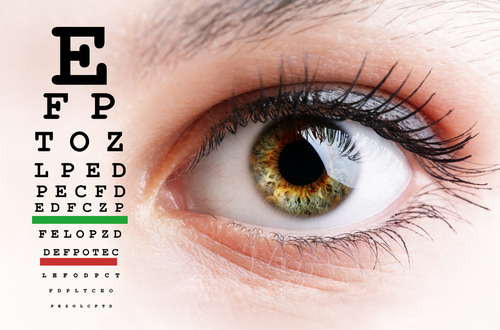
20/20 vision a term used to describe normal visual acuity — the sharpness of a person’s vision — measured at a distance of 20 feet. If a person has 20/20 vision it means that they can see clearly at 20 feet what should normally be seen at a distance. If someone has 20/100 vision it means that they must be as close to 20 feet as possible to see what a person with normal vision could see at 100 feet.
The Snellen Eye Chart is a test that is used to measure a person’s distance visual acuity. The chart contains rows of letters, numbers or symbols printed in standardized graded sizes.
20/20 doesn’t necessarily mean that you have perfect vision, it only indicates that the sharpness or clarity of your vision at a distance. There are other important visual skills such as peripheral awareness, depth perception, eye coordination, color vision, and focusing ability that contribute to your overall visual ability as well. Some people can see very well at a distance, but are unable to focus on objects that are close to them. This condition can be caused by presbyopia (loss of focusing ability) or hyperopia (farsightedness). Other people can see items that are close, but not those that are far away. This is known as myopia (nearsightedness). A comprehensive eye exam can help to determine if there is anything that is affecting your ability to see well.
Fun facts regarding visual acuity:
The Snellen Eye Chart was created in the 1860s by Dutch eye doctor, Herman Snellen. There have been other charts that have been created that might also be used during an eye exam such as the Tumbling E Chart. The Tumbling E Chart features capital letter E’s facing in different directions. This chart comes in handy when examining children who don’t yet know the alphabet or for people who aren’t familiar with the English language and alphabet. Rather than say a letter, they can pick the smallest line of E’s that they can see, and say or point to which way the “arms” of the E in that line are facing. Numerous studies have shown that this chart and the Snellen chart come up with nearly the same results.
Around 1 million aged 40 and older in the United States are considered to be legally blind.
To obtain a driver’s license in the US, you need to have at least 20/40 vision or better.

March 20th marks the first official day of spring — a day that many of us look forward to throughout the long winter months, but with spring’s beautiful weather and blooming flowers comes seasonal allergies. High levels of pollen, dust and other irritants can leave eyes feeling less than stellar. Approximately one fifth of all Americans suffer from eye allergies leaving them with itchy, swollen, watery, and red eyes.
Because seasonal allergies are mainly caused by plant life that releases pollen into the air, they can be difficult to avoid. However, there are some ways that you can help lessen your allergy symptoms and keep your eyes protected this spring.
- Keep an eye on pollen reports. Your local weather channel will most likely give regular updates on the pollen counts for your area. When pollen counts are high, try and limit your outdoor activities as much as possible.
- Limit your exposure to wooded areas.
- When you do go outdoors, wear wraparound sunglasses to help shield your eyes from pollen, ragweed, etc.
- Close your doors and windows especially in the early morning hours when pollination tends to occur. Use air conditioning during the warmer months.
- Remove your contacts. Because the surface of contact lenses can attract airborne allergens, you should consider wearing eyeglasses during allergy season. You could also consider switching to daily disposable contact lenses that you can throw away after one use to avoid any possible build-up of debris and other allergens on the lenses.
- Use artificial tears or lubricating drops to relieve dry eyes or to flush out any irritants.
Be preemptive this allergy season and make an appointment to see your eye doctor. Your eye care provider may have more solutions to help you enjoy spring without red, itchy, swollen eyes.
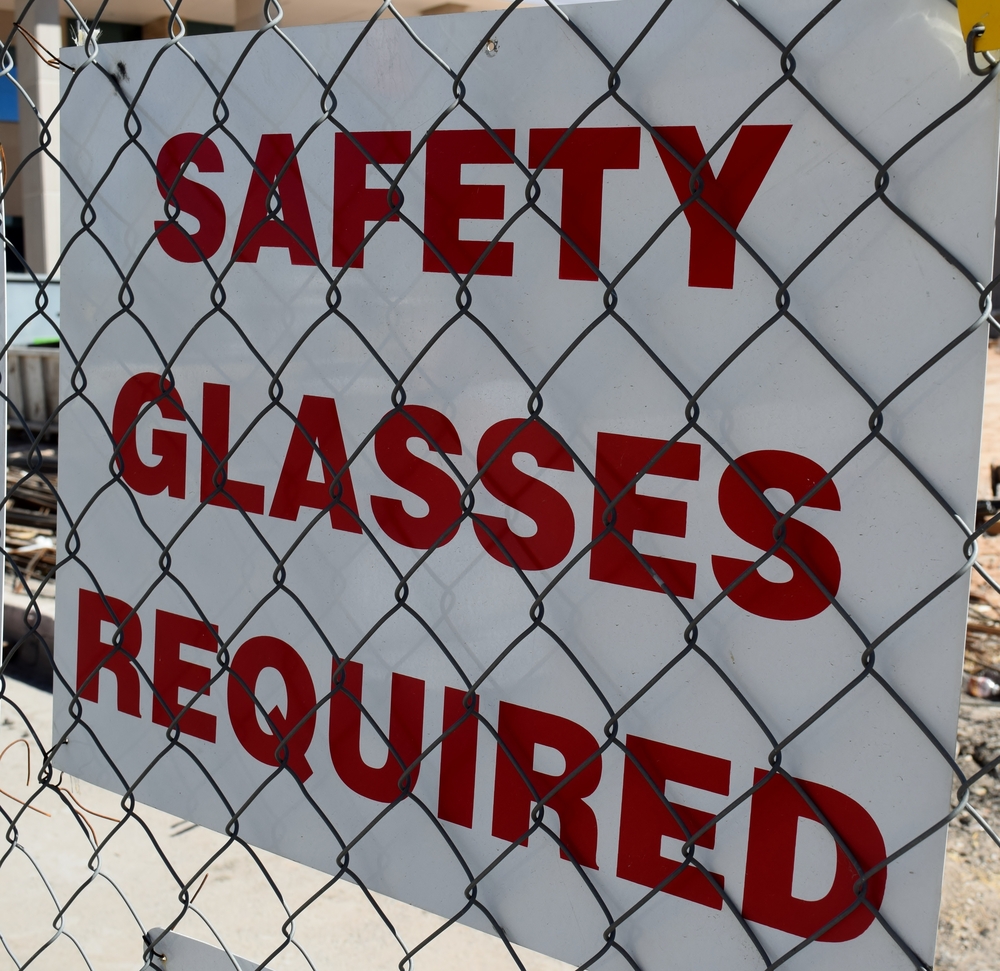
Over 2,000 eye injuries occur each day on job sites across the U.S. and one in ten of those injuries required missed days of works to recover. Of the total amount of work-related eye injuries that occur, 10 to 20 percent will cause temporary or permanent vision loss. While many think that eye injuries only occur in construction, trade or manufacturing jobs, nearly 40% of work-related eye injuries happen in healthcare facilities, offices, laboratories and other similar work environments. Safety experts and eye care providers agree that the right eye protection could have lessened the severity of these injuries or even prevented 90% of them.
Flying objects, particles, tools, chemicals and harmful radiation are the cause of most eye injuries. In many cases, implementing safe workplace practices and using appropriate protective eyewear could prevent injuries entirely. March is Workplace Eye Safety Awareness Month, which offers a great opportunity to remind everyone about a few tips to help protect eyes from potential injury.
There are a few things you can do to help prevent an eye injury in the workplace:
- Eliminate hazards before starting work by using machine guards, work screens or other engineering controls.
- Always wear the appropriate safety eyewear, even if you are just passing through a potentially hazardous area.
- If you’re working in an area with lots of particles or dust, be sure to wear safety goggles with side shields to protect against foreign objects from entering your eyes.
- Always wear safety goggles or face shields when working with chemicals to protect against splashing.
- When working around hazardous radiation like welding, fiber optics and lasers, be sure to use specially designed safety goggles and helmets that are made especially for such tasks.
- Keep safety eye wear in good condition and replace when necessary.
Remember that something as simple as putting on a pair of safety glasses can help prevent serious eye injuries. These injuries are not only painful, but they can cause many lost days of work and sometimes lead to permanent vision loss. Although March is designated as Workplace Eye Safety Awareness Month, it is important to remember to wear your safety glasses year round.
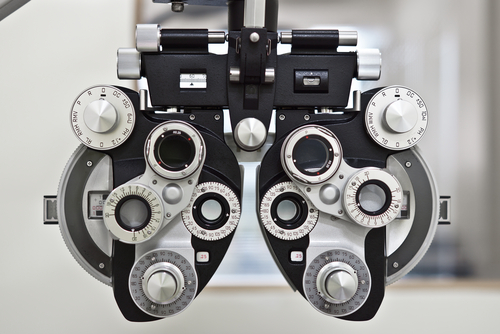
The month of February is Low Vision Awareness Month. What exactly is low vision? Low vision describes significant visual impairment that isn’t correctable through glasses, medication, eye surgery or contact lenses. It’s often characterized by partial sight such as blind spots, tunnel vision or blurred vision. The most common causes of low vision in the United States are glaucoma, age-related macular degeneration (AMD), diabetic retinopathy, and cataracts. There are several other causes of low vision as well such as strokes, traumatic brain injury and other diseases.
Children as well as adults can be affected by low vision. People can be born with conditions like albinism or optic nerve damage that can result in low vision. But low vision is most common in adults and seniors.
Low vision treatment requires different approached as each individual case of low vision may differ. Treatment plans may include specialized optical systems, prescription glasses, video magnification, non-optical options and/or medical rehabilitative therapy to maximize the ability to perform every day activities such as dressing, grooming, bathing, and eating. Many low vision patients maximize their remaining vision with the use of vision aids. These low vision devices can help to enhance contrast, magnify objects and lessen glare.
In observance of Low Vision Awareness Month, Vision Care Center encourages everyone to have a complete eye exam. Getting an annual eye exam increases the chances of early detection and diagnosis of conditions that may lead to vision loss.
You might think that because your vision is fine that your eyes are healthy, but visiting Vision Care Center for a comprehensive dilated eye exam is the only way to be absolutely certain. During your visit both of your eyes will be closely examined for any signs of vision problems and eye diseases. The dilation of your eyes is a very important part of your comprehensive eye exam as it helps your doctor to get a clear picture of both your eye health and your overall well-being.
What happens during the exam?
To dilate your eyes, special eye drops will be administered that cause your pupils to become larger. This makes it easier for your doctor to see the back of the eye. It takes about 15 to 20 minutes for pupils to fully dilate. The dilating eye drops may cause your eyes to sting. They may also cause you to experience a medicine taste in your mouth.
Once your pupils are dilated, your doctor will then shine a bright light into your eyes to see various parts of the back of the eye. You’ll be asked to look up, down, left and right while the examination is performed.
This helps your doctor see the inside of your eye entirely, including the macula (the center point of your vision) as well as your optic nerve, which sends messages from your eyes to your brain. Your doctor will look for signs of damage to the blood vessels in your eye that can be caused by diabetes and high blood pressure and will examine your optic nerve for signs of glaucoma.
Other conditions that can be detected during your dilated eye exam include histoplasmosis, retinal tears or detachments, diabetic retinopathy, macular degeneration, and other potentially serious eye diseases and conditions.
What happens after my eye exam?
Depending on the type of drops used, dilation may last for several hours. After your exam, you may notice sensitivity to light or that your vision is blurry. You may want to wear sunglasses to help protect your eyes from bright light.
Who should have a dilated eye exam?
Whether eye dilation is necessary depends on the reason for your eye exam, your age, your overall health and your risk of eye diseases. Annual comprehensive dilated eye exams are generally recommended starting at age 60. However, African Americans are advised to start having comprehensive dilated eye exams starting at age 40 because of their higher risk of glaucoma. It’s also important for anyone with diabetes to have a comprehensive dilated exam at least once a year.
When determining the necessity of eye dilation, your doctor will take these items into consideration:
- The reason behind your eye examination. Certain symptoms may require a dilated exam to determine their cause. Some conditions requiring follow-up exams may not need dilation during every visit unless there are new concerns or symptoms.
- Your age. The risk of eye diseases increases with age. Therefore it is recommended that people age 60 and older have a dilated eye exam once a year.
- Your overall health. Certain diseases, like diabetes, increase the risk of developing eye disease.
- Your eye health. Having a history of eye diseases that affect the back of the eye, such as retinal detachment, can increase your risk of problems in the future.

Happy New Year to all of you! With the start of 2015 comes resolutions to be the best that we can be in the New Year. Many of us make goals related to health or exercise — losing weight is one of the most common New Year’s resolutions, but one part of our body that tends to get overlooked is our eyes. This year, whether you’re looking to eat healthier, lose weight or bulk up; make it a point to get your eyes into the action.
Healthy vision can improve your quality of life. Keep this year’s resolution to do what you can to ensure healthy eyes and vision. Here are a few things that you can do to achieve this goal in 2015.
Schedule a Comprehensive Eye Exam
Be pro-active when it comes to having your eyes examined. Make appointments not only for yourself, but for your whole family. A comprehensive eye exam can detect vision issues as well as underlying health problems such as high blood pressure, diabetes, inflammations, infections and more.
Don’t Forget Your Sunglasses
Sunglasses aren’t just fashionable; they also protect your eyes from harmful UV rays. Don’t forget to sport your shades even on overcast days as those damaging rays can filter through the clouds and harm your eyes. Too much exposure to UV rays can increase your risk for cataracts as well as macular degeneration. It can also cause short term eye damage such as photokeratitis, which is a painful eye condition that results in a burn on the cornea — kind of like a sunburn, but on your eye.
Stop Smoking
If you currently smoke, quit. Smoking is not only injurious to your lungs, but it also increases your risk of developing cataracts and eye disease.
Rest Your Eyes
In today’s highly digital world it is not uncommon for our eyes to become strained, that’s why it is so important to remember to rest your eyes. If you work on a computer, make sure you’re following the 20-20-20 Rule: Every 20 minutes, take your eyes off your computer and look at something 20 feet away for at least 20 seconds.
Exercise
Regular exercise does your body a whole world of good. A recent study tracked 41,000 runners over the course of seven years and found that consistent long distance runners were considerably less likely to develop cataracts than their more sedentary peers. Another study focused on age-related macular degeneration and found that distance runners saw a nearly 20% reduction in their risk of developing AMD.
Eat Your Way to Healthier Vision
Healthy vision begins with a balanced diet filled with fruits and veggies. Vegetables, especially leafy greens, contain many nutrients and antioxidants that help to keep your eyes performing their best. Fish a great source of omega-2 fatty acids that help to protect vision and assist in tear production — helping to prevent dry eye. Omega-3’s can also help reduce your risk of macular degeneration, glaucoma and more.
Drink More Water
Those recommended 8 glasses of water a day are not only great for your body, but they can also help to keep your eyes moist and nourished, which can aid in the prevention of dry eye.
Protect Your Peepers
An estimated 2.4 million eye injuries occurred in the United States in 2014. These could have easily been prevented with the use of proper eyewear. Whether you’re playing sports of mowing the lawn make sure your eyes are protected with appropriate eyewear.

Even though it is a very natural reaction to rub your eyes when they’re feeling itchy, watery or otherwise irritated, it is important to keep your hands away from your eyes. Rubbing them can lead to eye injuries, infections or even damaged vision.
Our eyes become itchy or irritated for a variety of reasons. Sometimes this reaction is caused by allergies, other times a foreign object may be the source of irritation when it becomes trapped inside the eyelid. In any case, rubbing your eyes can be dangerous. Your eyes natural defense for removing irritants comes from producing tears to flush objects out of the eye. Rubbing your eyes when there is a foreign object trapped in the eyelid can result in scratches to the cornea. It also increases irritation by increasing additional histamine into the affected eye and can lead to the development of an infection. Eye drops can help to supplement natural tears in individuals who have dry eyes and may not produce enough tears for relief of irritation.
Dark circles under your eyes may also result over time if your frequently rub them as rubbing causes blood vessels in the eyelids to break and leak blood. As a result, blood pools under the skin and creates dark circles. Once dark circles appear, it may be difficult to effectively get rid of them. Wearing an eye mask when you sleep can help to eliminate dark circles that are caused by rubbing.
Regular eye rubbing over an extended period of time can lead to a condition known as keratoconus. Keratoconus causes a thinning of the cornea and results in the cornea losing its shape. This condition can lead to blurry vision and sometimes cannot be fully corrected with glasses or contact lenses.
Keratoconus is often accompanied by severe infections. Fingers and hands can carry many germs, even if you wash your hands regularly. Those germs can spread to your eyes through rubbing and result in pink eye (conjunctivitis) and other similar complications. Chronic eye rubbing can also result in long-term vision damage that cannot be fully corrected or reversed.
How to treat irritated eyes
Relief from itchy eyes can be achieved through the use of over the counter eye drops or by applying a cold compress to your eyes. When these home remedies are not enough, or if an infection develops, you should arrange to see your eye doctor as soon as possible. Your doctor can perform a thorough eye examination to identify the root cause of your eye irritation and prescribe treatment to help relieve your symptoms.
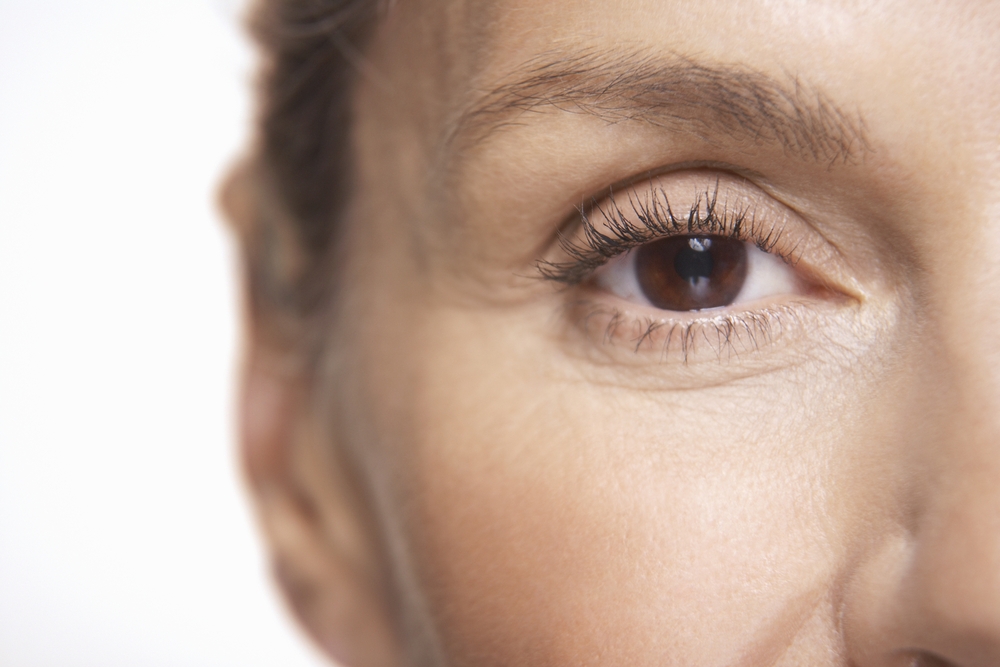
One of the most common side effects of getting older is the loss of near perfect vision. All of a sudden you find yourself having to squint to see certain things, causing stress, eye strain and an overall feeling of annoyance. This decline in close-up vision is caused by a condition known as presbyopia, which can have a direct impact on your daily life. Without adequate vision correction, you can find yourself struggling to read important text on medicine bottles or on receipts.
Presbyopia occurs when the eye’s natural lens hardens, and as a result, the eye is not able to focus light directly on the retina. Aging also affects muscle fibers around the lens, which makes it harder for the eye to focus on objects up close. Therefore, the lens becomes ineffective, which causes light to focus behind the retina, causing poor vision when it comes to objects that are close up. In younger people, the lens of the eye is soft and flexible, which allows the tiny muscles inside the eye to easily reshape the lens to focus on close and distant objects.
Presbyopia starts to occur between the ages of 38 and 45 and is experienced by nearly one hundred percent of individuals by the age of 50. Everyone experiences some loss of focusing power of near objects as they age, but some will notice it much more than others.
Signs and symptoms of presbyopia include:
- Eye strain
- Recurring headaches
- Problems seeing objects that are close up
- Difficulty reading small print
- Needing to hold reading material farther than an arm’s length away
If you experience any of these symptoms you should make it a point to schedule a comprehensive dilated eye exam. If you currently wear glasses or contact lenses and still have these issues, a new prescription might be necessary. Again, this is another great reason to schedule an appointment for an eye exam. Your eye exam will also include a check for other age-related eye conditions such as glaucoma, macular degeneration, cataracts, and diabetic retinopathy.
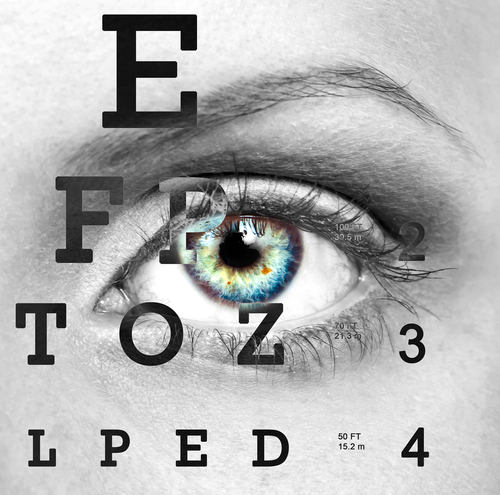
It’s easy for many of us to take our physical health for granted. Running, jumping and even climbing stairs doesn’t seem like a task until you’ve sprained an ankle or even broken a bone or torn an ACL. Similarly, having healthy vision is something so taken for granted by many of us that it tends to recede into the back of our minds until one day our eyesight isn’t as crystal clear as we remember.
Unsurprisingly, vision issues can have an astonishing impact on a person’s quality of life by limiting social interaction and mobility, increasing the risk of serious injuries and more. Consider some of these facts about individual’s in the United States suffering from visual impairment:
- 20.5 million people in the United States aged 40 and older have cataracts
- 3.4 million Americans aged 40 and older are either blind or visually impaired. That’s nearly 3% of the population.
- Approximately 14 million Americans aged 12 and older have self-reported visual impairment defined as distance visual acuity of 20/50 or worse. Among them, more than 11 million Americans could have improved their vision to 20/40 or better with refractive correction.
- 1.6 million Americans aged 50 and older have age-related macular degeneration
The most staggering statistic of them all is that only half of the 60-or-so million adults in the United States classified as being high risk for vision loss have actually visit their eye doctor in the last 12 months.
It’s not very difficult to envision the impact of going blind or suffering from severe visual impairment on your everyday way of life. So what can you do to make sure you’re properly protecting your vision? First, make sure you’re visiting your eye doctor yearly to receive a comprehensive eye exam. People usually only visit their eye doctor for new eyeglass prescriptions or common eye health conditions like strained eyes and fatigue, but often your doctor can also catch other health problems for which you may not even know you had symptoms, such as diabetes. Knowing your family’s eye health history can also help your doctor predict, diagnose and treat vision impairments. Another simple way to save your sight is by wearing protecting eyewear in potentially hazardous situations. All of these easy steps go a long way in preserving your vision and ultimately your way of life.
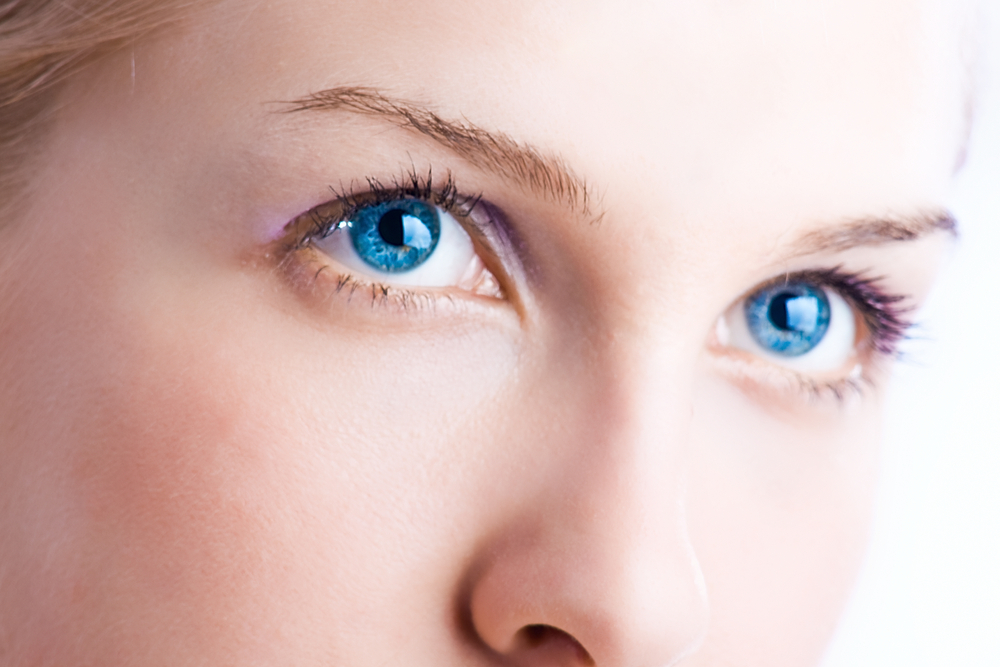
Did you know that diabetes is the leading cause of blindness in Americans aged 20 to 65? Not many people do. Vision Care Center is taking advantage of the fact that November is Diabetic Eye Disease Awareness Month by helping to generate awareness among our patients and community.
Statistics from the American Academy of Ophthalmology report that approximately 29 million Americans 20 years of age and older have diabetes, but nearly one-third don’t know they have the disease which puts them at a higher risk for vision loss and other health problems. Often symptoms go unnoticed and don’t begin to affect a person’s vision until the disease has progressed and is less easily treated. Eye problems that affect those who have diabetes include cataracts, diabetic retinopathy and glaucoma.
Affecting 5.3 million Americans 18 and older, diabetic retinopathy is the most common vision complication associated with diabetes. Diabetic retinopathy is a potentially blinding condition in which blood vessels inside the retina become damaged by high blood sugar levels caused by diabetes. This results in fluid leaking into the retina, obstructing blood flow, which can lead to severe vision loss.
Early diagnosis of diabetes can greatly reduce a person’s risk of developing eye disease. With a dilated, comprehensive eye examination, our doctors can look inside your eye and examine blood vessels directly, detecting signs and symptoms of vascular disease such as diabetes and hypertension. With a comprehensive eye exam, early signs of diabetic retinopathy, such as leaking or damage blood vessels, retina swelling (macular edema), and deposits on the retina can be detected. Diabetic Eye Disease Awareness is a perfect time to invest in your vision by scheduling a comprehensive eye exam.
